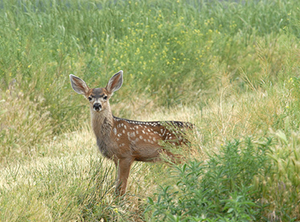 The following is a post from a guest author, Dr. Michael J. Yabsley, MS, PhD, Associate Professor, Department of Population Health at the College of Veterinary Medicine, University of Georgia and Board of Directors, Companion Animal Parasite Council.
The following is a post from a guest author, Dr. Michael J. Yabsley, MS, PhD, Associate Professor, Department of Population Health at the College of Veterinary Medicine, University of Georgia and Board of Directors, Companion Animal Parasite Council.
He shares some important observations on the relationship between our pets and their people, especially in the context of vector-borne pathogens like Lyme disease.
Pets are our companions. They share our lives, our homes and our family time. We often share the mutual love of activities such as hiking or simply playing fetch in the backyard. While companionship is clearly why we have pets, our bond with them is often far greater than we appreciate — we share the same environment and more often than not, the same health concerns. At the top of this list are several vector-borne diseases.
 Blacklegged ticks
Blacklegged ticks